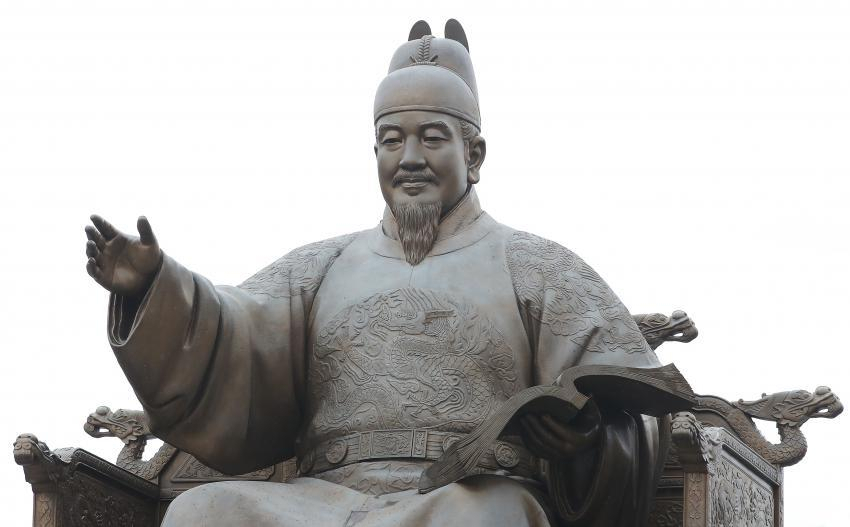[Newsmaker] [Hello Hangeul] Tale of a script: From invention to widespread adoption
Born out of need to educate illiterate public, Hangeul became a symbol of national pride during colonial era
By Yoon Min-sikPublished : Feb. 19, 2023 - 15:14
In the winter of 1443, Korea’s native writing system called Hunminjeongeum, which means “the correct sound that teaches the people,” was born. Three years later, a book of the same name was published under commission of the king to explain how the novel writing system works and how it was created.
Nearly six centuries have passed, and the writing system, now called Hangeul, is credited for South Korea’s near-100 percent literacy rate, with many taking pride in the scientific and easy-to-learn script.
Not only that, the Korean alphabet played a crucial part in education of the people and was even the central piece of national resistance during Japan’s colonization of the Korean Peninsula, historians say.
The story of Hangeul, one that has had no shortage of tribulations, began with the anguishes of a man who put the need of his people before everything else, the one who many regard the greatest monarch of Joseon Dynasty – King Sejong the Great.
How Hangeul was made
The reasons behind Hangeul’s creation is briefly mentioned in King Sejong’s preface to Hunminjeongeum. The king said that it was created for the majority of ordinary non-privileged Koreans who could not read or write using the existing Hanja (Chinese script) system.

Records show that the history of Korean language itself dates back thousands of years.
A Chinese history book called the “Book of Liang,” written in the 7th century, says that the ancient Korean kingdom of Baekje was similar to another Korean kingdom called Goguryeo in language and apparel. It also states that one must go through Baekje to communicate with the Silla Kingdom, indicating that the three main kingdoms had very similar languages or possibly even shared one.
But the kingdoms did not have an independent writing system, and relied on Hanja when writing or reading. As such, literacy had become a privilege to which the common people were denied access.
Sejong must have seen the need for an easier script to increase literacy in many aspects of his kingdom. One of the purposes it could serve was to help establish strong law and order within society, experts say.
“On his way to abolishing negative practices related to the judicial process, Sejong appears to have been hindered by Hanja, motivating him to create the Hunminjeongeum (Hangeul),” writes Jo Byeong-in, a senior researcher from the state-funded Korean Institute of Criminology and Justice, in his 2019 paper.
Jo found various records showing that Sejong had given several orders out of concern for wrongful punishments on those who could not read. This included ordering district officials to post basic legal clauses on the walls of government buildings and to teach the said clauses in spoken words for those who could not read Hanja.
While records show that the king maintained his efforts to educate citizens on the law, his orders to aid those who could not read often fell on deaf ears. “Hell-bent on making sure that (the people) would not be punished simply because the written words were too difficult for them to understand, it appears that Sejong went ahead with creating the new writing system in secret,” Jo wrote.
Although it is clear that the king led the creation of Hangeul, Hunminjeongeum does not specify exactly who else was involved in its creation, leading to some controversies. Sejong’s oldest son, who later came to succeed him and became known as King Munjong, was one of the few who is recorded to have participated, but the records are less clear about the rest.
In 2019, a controversy erupted over the movie “The King’s Letters” starring Cannes-award winning actor Song Kang-ho. Many took issue with the film’s depiction of Hangeul’s creation. While the film made it look as if a Buddhist monk named Sinmi led the creation of the writing system, many pointed out that there were no historical records backing such depiction.

Beacon of hope during times of loss
During Japan’s 1910-1945 occupation of Korea, the colonial government gradually banned the use of Hangeul and the Korean language as part of its assimilation policy aimed at integrating the residents of the peninsula into the Japanese Empire. Efforts by local scholars, however, helped keep the nation’s spirit alive through its native language.
Ju Si-gyeong is widely known as one of the founders of modern Korean linguistics. On the record, he is the first person to call the Korean writing system Hangeul in 1912, although it is unclear exactly who is to be credited for coining the term.
Ironically, it was during the colonial era when the nation’s first all-Hangeul newspaper was created. Dongnip Sinmun -- called The Independent in English -- was first published in 1896 by a group led by Seo Jae-pil.
On Nov. 4, 1926, the Joseon Language Society – a forerunner of the Korean Language Society -- celebrated the inaugural Hangeul Day. The date was later moved to Oct. 9, and it remains a national holiday.
The JLS would play an important role in preservation of the Korean language later on. In 1942, the group sought to publish Korea’s first dictionary when the Japanese government raided its headquarters and arrested the members.
The Japanese government accused the JLS of being a guerilla group fighting for Korea’s independence, and incarcerated its key members. The incident resulted in much of the dictionary manuscript being lost. It was only in 1957, more than a decade after Korea’s independence, that the dictionary was completed by the Korean Language Society.



















![[Today’s K-pop] Treasure to publish magazine for debut anniversary](http://res.heraldm.com/phpwas/restmb_idxmake.php?idx=642&simg=/content/image/2024/07/26/20240726050551_0.jpg&u=)